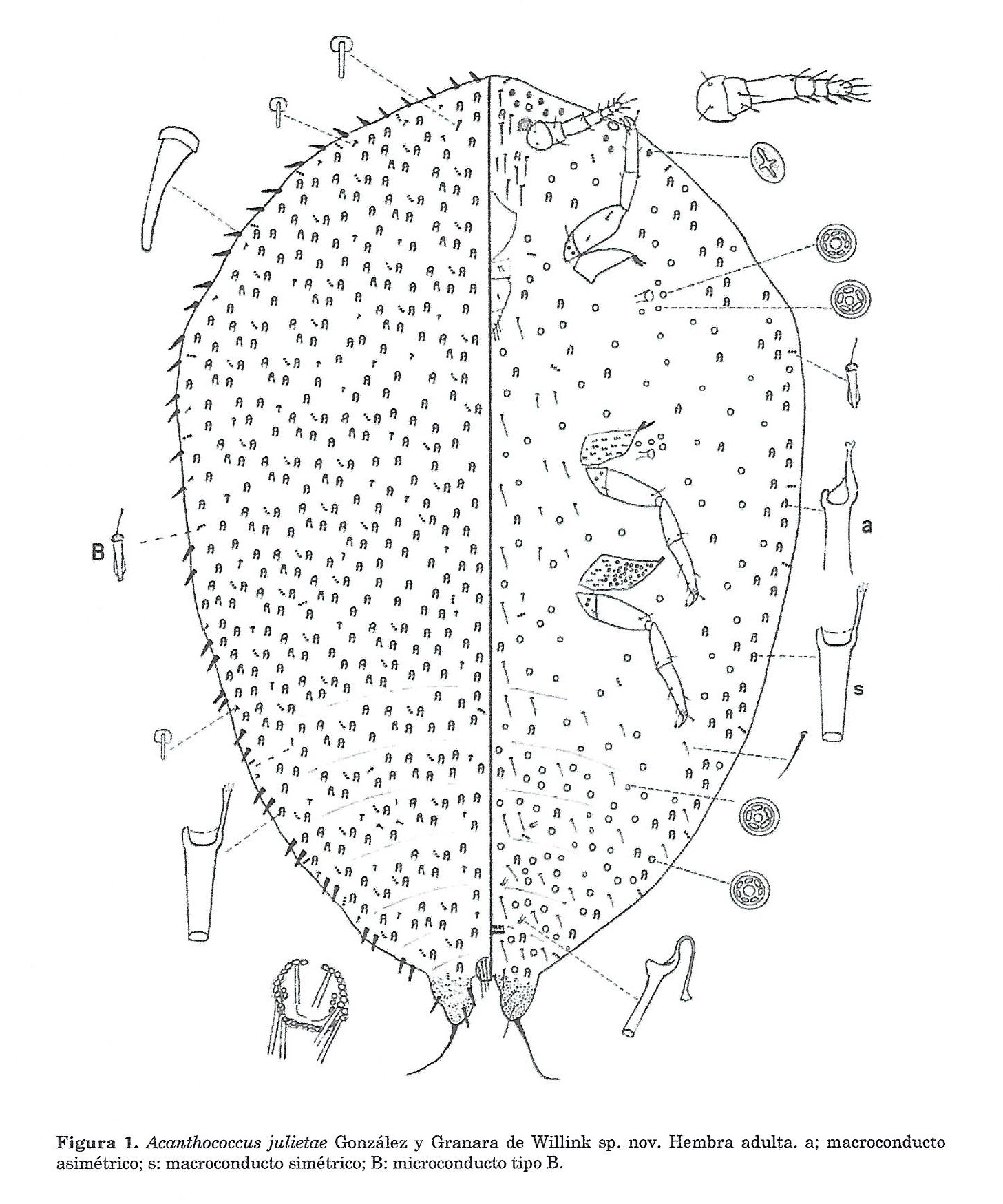Valid Names Results
Acanthococcus julietae Gonzalez y Granara de Willink, 2012 (Eriococcidae: Acanthococcus)Nomenclatural History
- Acanthococcus julietae Gonzalez y Granara de Willink 2012: 2-5. Type data: ARGENTINA: Jujuy, La Ciénaga and Abra Blanca, 3/17/1996, unknown host, by L. Claps. Holotype, female, by original designation Type depository: Tucuman: Fundacion e Instituto Miguel Lillo, Universidade Nactional de Tucuman, Argentina; accepted valid name Illustr.
Common Names
Ecological Associates
Hosts:
Families: 1 | Genera: 1
- Asteraceae
- Asteraceae | GonzalGr2012
Geographic Distribution
Countries: 1
- Argentina | GonzalGr2012
Keys
- GonzalNi2014: pp.7 ( Adult (F) ) [Species of Acanthococcus in Argentina]
- GonzalGr2012: pp.15-16 ( Adult (F) ) [Ericoccidae on Asteraceae]
Remarks
- Systematics: Acanthococcus julietaeis different from other Argentine species of the genus, by having conical marginal setae with rounded ends, well differentiated from the dorsal setae. Acanthococcus julietae resembles A. coccineus (Cockerell); A. hoyi (Miller and Miller) and A. cryptus (Cockerell), all of the Neartic region (Miller and Miller, 1992) and A. clapsae Gonzalez because they have differentiated marginal setae, distinct from dorsal setae. (González & Granara de Willink, 2012)
- Structure: Females form round, white felt sacks and male sacks are elongate, both with a rear opening. They are grouped in branches of the host plant. Dorsal surface with small setae; Numerous type B microducts. Margin with two large, conical, blunt-ended setae in each abdominal segment. Ventral surface with numerous septilocular pores; Metacoxae with approximately 35 translucent pores; The three pairs of tibia with four setae; Antennas with six segments; Frontal lobes present. (González & Granara de Willink, 2012)
- General Remarks: Detailed description and illustrations in González & Granara de Willink, 2012.
Illustrations
Citations
- GonzalGr2012: description, diagnosis, host, illustration, key, taxonomy, 2-5, 16
- GonzalNi2014: key, 7




